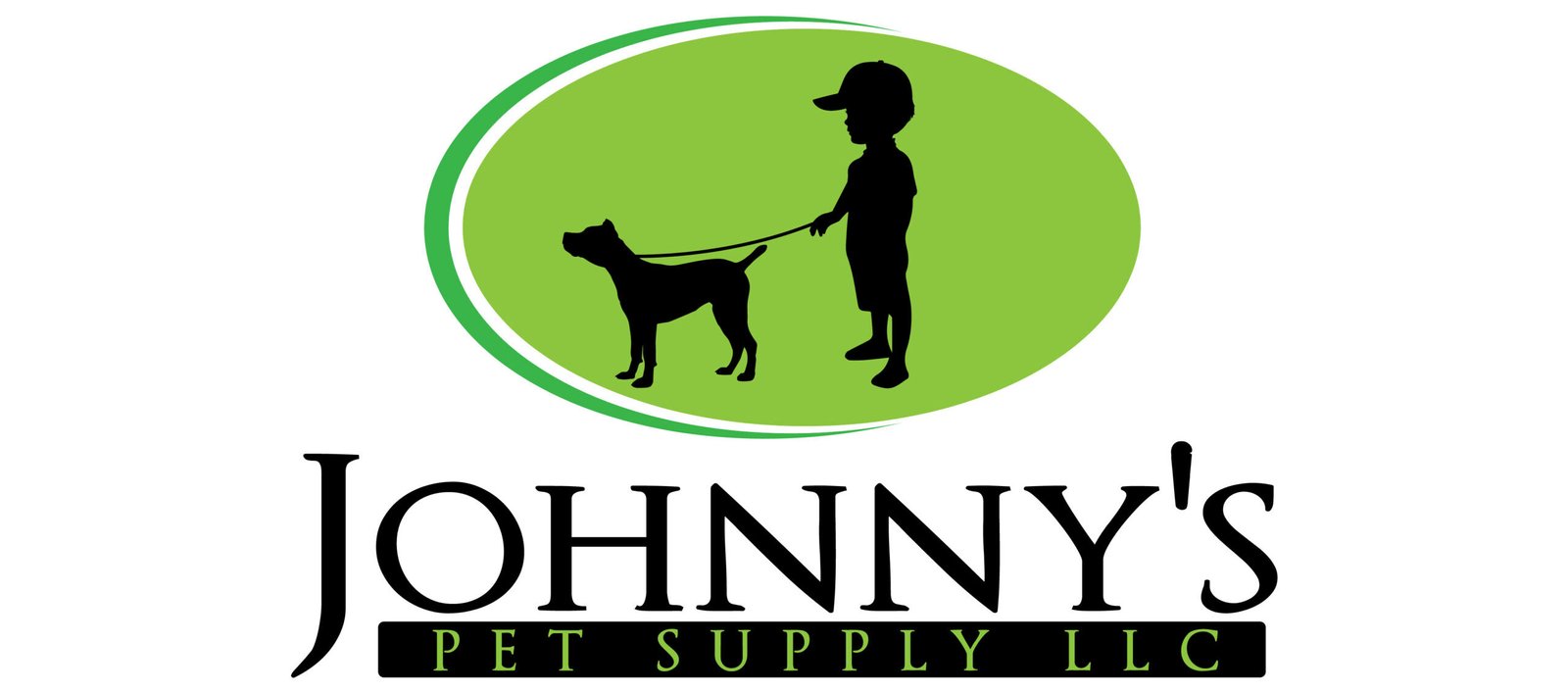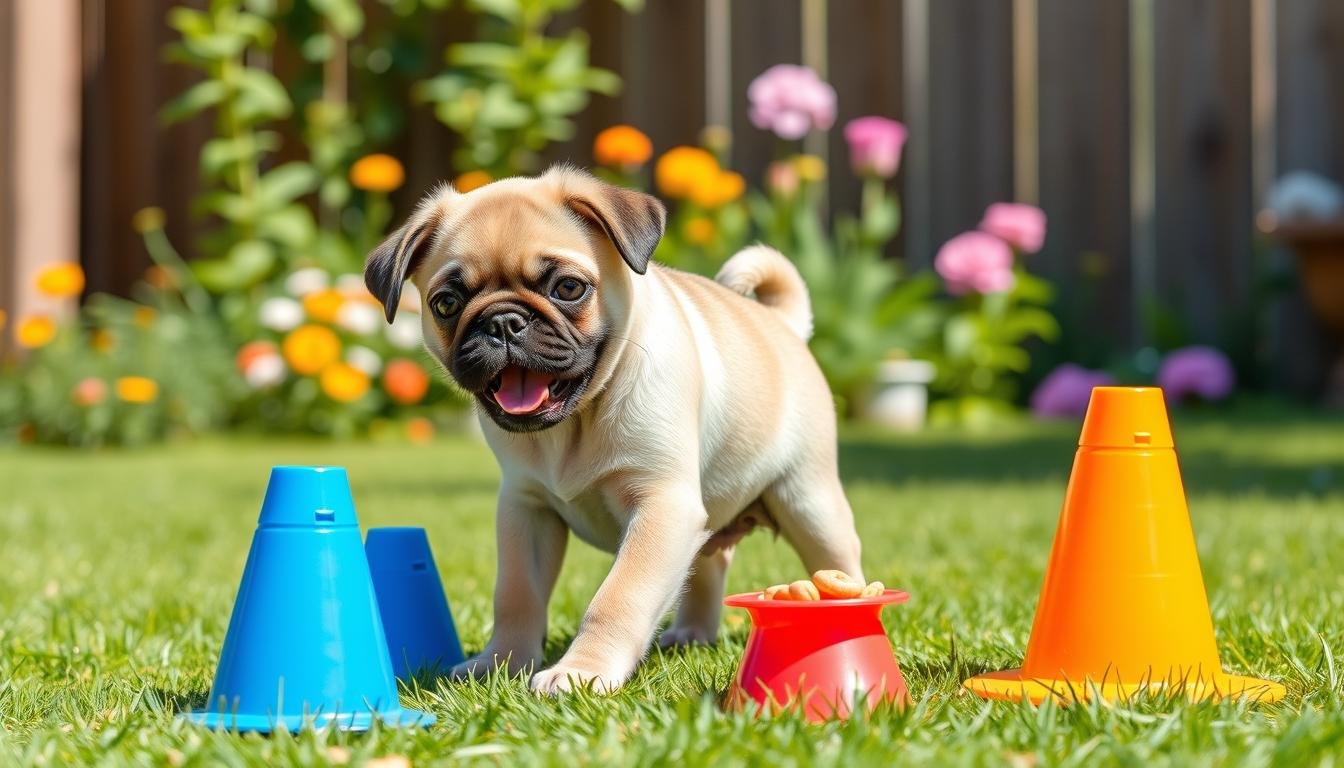How to avoid bad habits during Pug puppy training
Did you know crate training can cut accidents in Pug puppies by up to 80%? This fact shows how vital early training is. It helps shape your Pug’s behavior and stops bad habits. Getting a new Pug puppy is thrilling, but training them right is key.
In this guide, you’ll find ways to help your Pug puppy grow well. They’ll become the loving, well-behaved pet you’ve always wanted.
The first 6 months of a Pug’s life are crucial. They can pick up bad behaviors easily if not trained right. By being proactive and using good training methods, you can stop bad habits. This way, you and your Pug can have a happy, long-lasting relationship.
This article will help you with everything from housebreaking to stopping destructive chewing. You’ll get all the help you need to tackle Pug puppy training. Your furry friend will thank you for it.
Prioritize Early Training for Your Pug
Starting early is key to successful Pug puppy training. Teach your Pug basic commands like “sit,” “stay,” and “come” right away. Early training sets clear boundaries and expectations, making learning easier for your puppy.
Start Your Pug Puppy Early
Experts say the critical socialization period for puppies ends by 16 weeks. It’s vital to expose your Pug puppy to various sights, sounds, and experiences. This helps them become well-adjusted and confident dogs.
This includes traffic noises, public transportation, car rides, passersby of all ages and shapes, other dogs, vet visits, and body handling.
Consistency is Key for Pug Training
Keeping consistency is crucial in Pug training. Make sure everyone uses the same commands and rewards. This helps your Pug puppy understand what’s expected and avoids confusion.
Consistency in approach, schedule, and expectations leads to a well-trained Pug companion.
“Building an emotional foundation with puppies during the first three to four months is critical.”
By starting early and staying consistent, you’ll help your Pug succeed. You’ll establish clear boundaries and expectations.
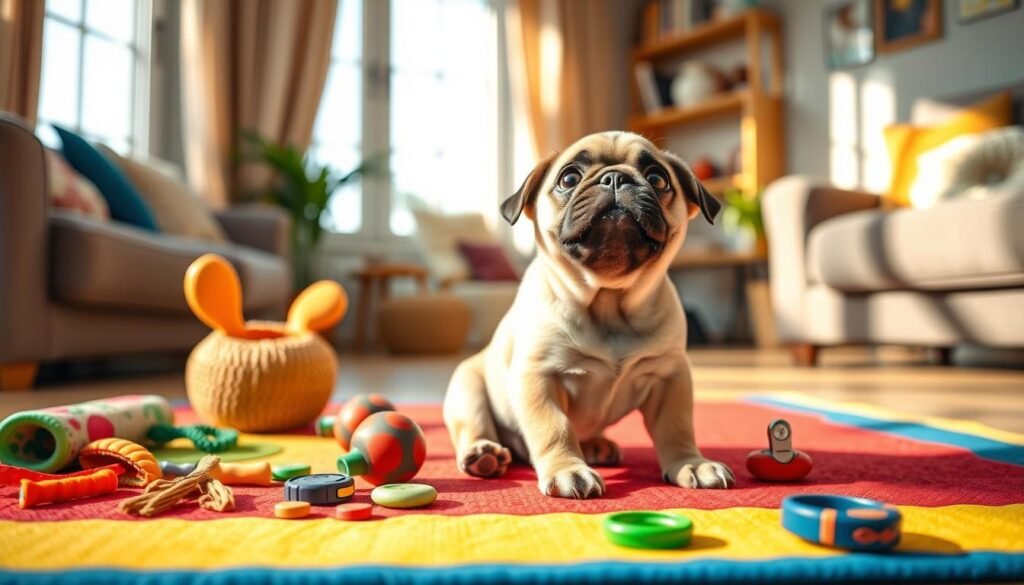
Use Positive Reinforcement Techniques
Training your Pug puppy with positive reinforcement is a big change. This method rewards your pup for good behavior. It helps them learn and builds trust between you.
Reward Desired Behaviors
Always reward your Pug puppy for good actions. This could be treats for sitting or extra cuddles for coming to you. The goal is to make them want to do it again.
Avoid Punishment-Based Training
Don’t use punishment to stop bad behavior. It can hurt your bond and make training harder. Instead, use positive reinforcement for Pug training to teach good habits.
“Reinforcement history indicates the frequency of behavior being reinforced, and dogs offer default behaviors that have been consistently reinforced.” – Dog Training Expert
Using positive reinforcement techniques helps your Pug puppy learn well. It makes training a positive experience for them.
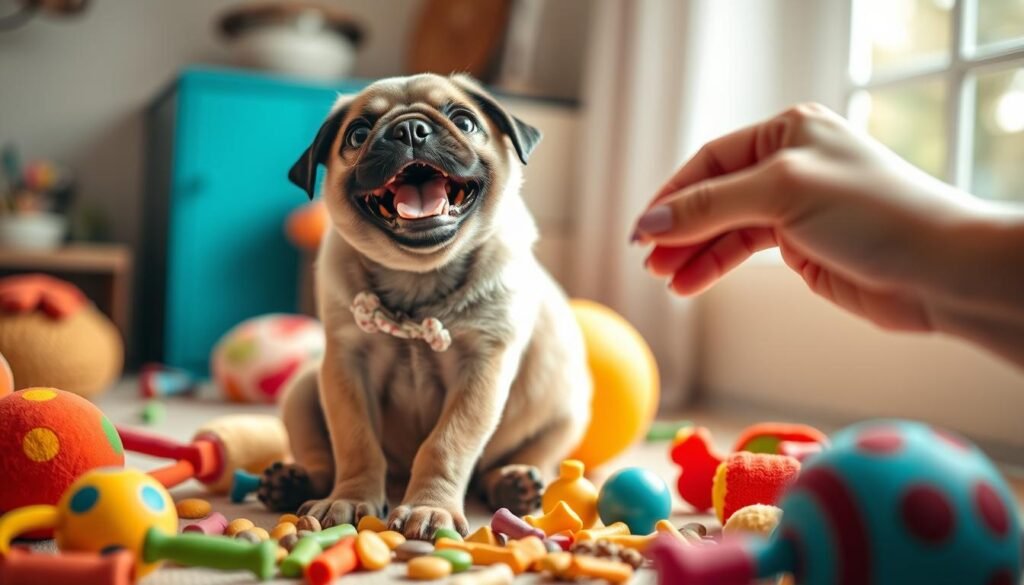
Socialize Your Pug Puppy Properly
Socializing your Pug puppy is key for their growth and happiness. It helps prevent behavioral issues like aggression and fear. This way, your Pug will become confident and well-adjusted as an adult.
The first 6 months of a Pug puppy’s life is the best time for socialization. It’s when they can be introduced to new places, people, and animals in a safe and positive way.
- Introduce your Pug puppy to new sights, sounds, and experiences in a calm and rewarding way.
- Take them on controlled walks and visits to dog-friendly public places, such as pet stores or parks.
- Encourage positive interactions with people of all ages and other well-socialized pets.
By prioritizing socialization for Pugs, you help them develop important social skills. This approach can prevent behavioral issues in Pugs and ensure they succeed as they get older.
“Socialization is the key to raising a well-rounded Pug. Exposing your puppy to positive experiences early on will pay dividends for years to come.”
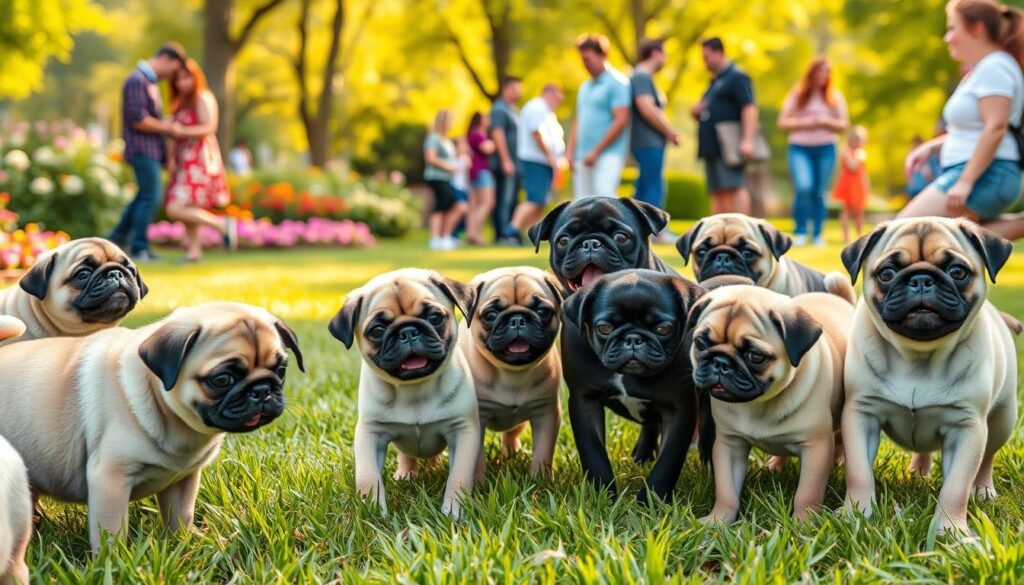
Socializing your Pug puppy is a long-term effort that needs patience and consistency. By putting in the time and effort now, you’ll get a confident and well-behaved Pug. They will be able to handle the world around them with ease.
How to avoid bad habits during Pug puppy training
Redirect Unwanted Behaviors
Instead of punishing your Pug for unwanted behaviors, redirect them to a positive alternative. If they bite furniture or shoes, give them a chew toy. This stops the bad behavior and teaches them where to channel their energy and instincts.
Teach “Leave It” and “Drop It” Commands
Teaching your Pug “leave it” and “drop it” commands is key. These commands can save your Pug’s life in dangerous situations. Be patient and use positive reinforcement to teach these important skills.
Recent surveys show 42% of dog owners want to stop their dogs from barking when excited or nervous. Also, 23% are worried about their dogs destroying furniture and decor. By teaching your Pug these commands, you can prevent bad habits and keep them safe.
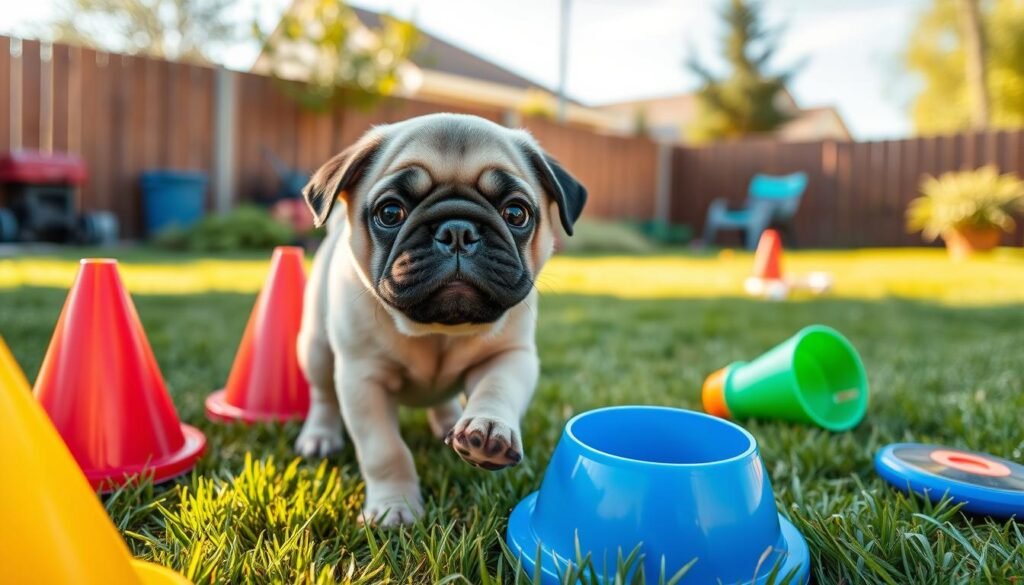
“Consistency in rules and behavior standards significantly impacts how dogs behave.”
Addressing the root cause of unwanted behaviors is crucial. This includes boredom or lack of exercise. By being proactive in training, you can ensure your Pug is well-behaved and confident.
Set Realistic Expectations for Training
Starting to train your Pug puppy? It’s key to have realistic hopes. Every Pug learns at their own speed. What works for one might not work for another. By keeping your hopes in check and focusing on your Pug’s own pace, you’ll both enjoy the training journey.
Remember, progress in Pug puppy training isn’t always straight. Your Pug might ace some commands but struggle with others. Be patient and celebrate small wins. Don’t compare your Pug’s progress to others or rush to master commands.
- Every Pug learns differently and might need more or less time to learn.
- Training takes time and effort. Consistency is key for your Pug to learn and remember.
- Setbacks and challenges are normal in training. Stay calm and keep going.
By setting realistic goals for your Pug’s training, you’ll handle the ups and downs better. The main goal is a well-behaved, happy Pug. With patience and understanding, you can reach this goal together.
“The key to successful Pug puppy training is to focus on your dog’s individual progress, not comparison to others. Celebrate small wins and be patient – the journey is as important as the destination.”
Keep Training Sessions Short and Engaging
Training your Pug puppy needs short and fun sessions. Puppies, like Pugs, can’t focus for long. So, aim for 10-15 minute sessions, 2-3 times a day. This keeps your Pug interested and helps them learn better.
Remember, it’s better to have a few good sessions than many short ones. This way, your Pug will learn more effectively.
Use Clear, Simple Commands
For the best results, use clear and simple commands for your Pug puppy. Don’t confuse them with too many words. Use one-word commands like “sit,” “stay,” “down,” and “come.”
Short sessions and simple commands help your Pug learn quickly. They also help you build a strong bond with your puppy. This method is key to effective training techniques for Pug puppies.
“The key to effective Pug puppy training is to keep it short, sweet, and simple. Consistent, positive reinforcement is the way to go.”
Be Patient with Your Pug’s Progress
Patience is key in Pug puppy training. Your Pug is learning and might not get it right away. Stay calm and give them time to learn new commands. Every Pug is unique, and some learn faster than others. A patient and understanding approach helps you through the training journey.
Puppies can only focus for 10-15 minutes, 2-3 times a day. This keeps them engaged and helps them remember better. It’s crucial that everyone uses the same commands and rewards to avoid confusion.
“Patience is not the ability to wait, but the ability to keep a good attitude while waiting.” – Joyce Meyer
Setting realistic expectations for your Pug’s progress is important. Every puppy learns at their own pace. By understanding and respecting your Pug’s individual differences, you can support their success.
Keeping your composure during Pug puppy training is tough but vital. Getting frustrated can harm your Pug’s learning. Stay positive, use positive reinforcement techniques, and celebrate small wins. With patience, your Pug will grow into a well-behaved companion.
Consider Online Dog Training Courses
Teaching your Pug puppy obedience can sometimes be tough. If you’re facing challenges, don’t be afraid to ask for help. A certified dog trainer or behaviorist can offer valuable advice and training methods just for your Pug.
Also, look into online dog training courses for Pugs. Programs like SpiritDog’s “Perfect Obedience” or the K9 Training Institute’s “Dog Masterclass” are great. They can supplement your Pug’s training and help you overcome any obstacles, making your Pug happy and well-behaved.
Online professional guidance for Pug puppy training can be a big help, especially for new Pug owners. These courses offer video lessons, feedback, and a community of Pug lovers. By supplementing Pug training with online resources, you can improve your pup’s skills and solve any behavior problems.
Training your Pug puppy is a journey. Getting professional help, whether in-person or online, can greatly improve your Pug’s behavior. Use the resources available and watch your Pug grow into a well-mannered and obedient friend.
